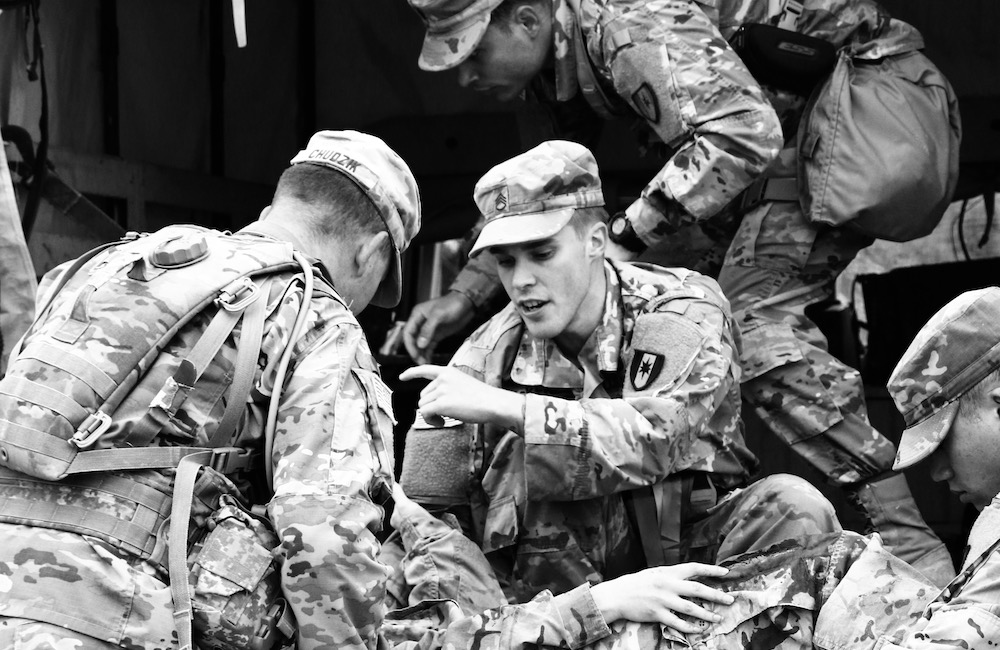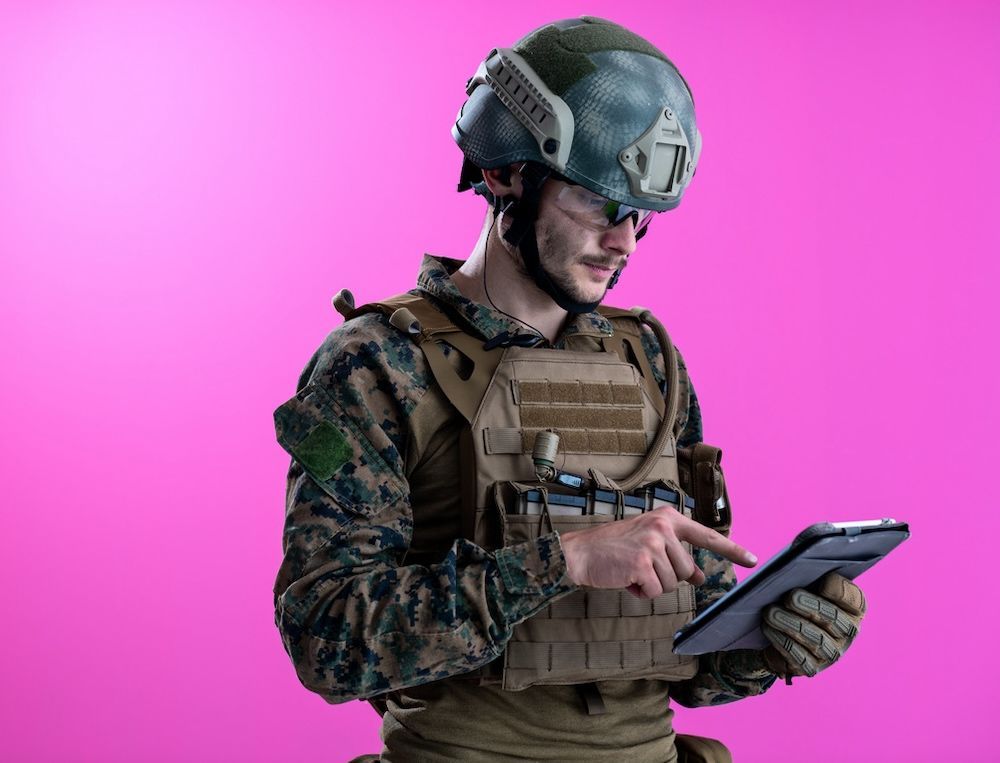Since the development of more affordable patient simulators like the SimMan in the mid-90s, clinical simulation has successfully expanded across numerous disciplines and professions in healthcare. In 1999, the Uniformed Services University of the Health Sciences (USUHS), a graduate nursing school and military medical school, established the first medical simulation center specifically targeting medical education and training. The field of healthcare simulation would not be in use the same way today without the joint effort of military and civilian medicine. This HealthySimulation.com article will provide clinical simulation champions with the opportunity to consider the similarities and differences of working with clinical simulation in the military versus civilian spaces.
As professional healthcare practitioners must understand the unique differences in clinical practice between military and civilian sectors, they must also specifically consider a comparison between the two fields when discussing healthcare simulation. Each of these fields has standards and practices that are unique to their environment, influenced by one another, or even similarities that are only differences in naming conventions.
Tactical Combat Casualty Care (TCCC) is employed by law enforcement officers (LEOs), first responders, and militaries around the globe to save and sustain life in the pre-hospital environment. In the civilian space, clinical simulation is used to prepare the healthcare professionals of tomorrow to save and sustain life, prepare for the rigors of their chosen profession, and improve patient outcomes. Below are the top five similarities and differences between medical simulation for Tactical Combat Casualty Care (TCCC) and civilian professional care.
5 (Similarity): An Emphasis on Planning and Preparation
Consults, templates, and deadlines are commonplace in both these environments. The adage of failure to plan results in planning to fail rings true across the board. – after all, the stakes are high for both disciplines. These practices enable the simulation team to anticipate the customer’s needs, manage expectations, coordinate and execute high-quality training, and efficiently schedule to continue to do so for future events.
The military and civilian healthcare providers both manage competing priorities from multiple entities. Simply put, medical simulation is not their only job. For example, the emergency medicine Sim Fellow is head of the residency program and works night shifts in the emergency department. Or, the combat medic who needs to prepare for an upcoming deployment, coordinate and execute required training on bleeding control for their unit of 2,000 soldiers, and has rifle marksmanship training at a shooting range the next day.
Scheduling, identification of resources, and delegation of personnel are all key to the success of their simulated clinical environment without hindering performance in any other domain in which they operate.
4 (Difference): “Approved Devices”
The Committee on Tactical Combat Casualty Care (CoTCCC) updates a regular list of recommended devices and adjuncts. These include pneumatic and non-pneumatic tourniquets, hemostatic agents, and airway management devices. CoTCCC has published its guidelines, pocket guides, videos, and other references as open-source material on deployedmedicine.com. These guidelines are put into place so that TCCC providers are trained and proficient in the same equipment that they are expected to employ in the operational environment. This level of highly-specified consistency is not present in healthcare simulation centers across academia.
This is likely due to it not being appropriate or feasible. While TCCC is meant to apply to multiple entities, they all serve the same purpose: pre-hospital trauma care. One is likely to find at least relative consistency across medical simulation centers with specific learner demographics (i.e., nursing, anesthesia, pediatrics, etc.). However, this does highlight an often-encountered friction point. What happens when a simulation center that typically serves medical students does not have the necessary resources for an OB or neonatal scenario?
3 (Similarity): The Value of Debriefing
Clinical Simulations can often be stressful experiences for learners. Therefore, recounting the event to reiterate learning points, improve future simulations, and provide feedback to learners is invaluable. When performing TCCC in the military environment, this is given a formal name and process: After Action Review (AAR).
Civilian equivalents of the AAR model include three-phase debriefing techniques like RAS (reaction, analysis, summary) and GAS (gather, analyze, summarize), and multiphase debriefing techniques like PEARL (promoting excellence and reflective learning).
Regardless of how this occurs (or the nomenclature used), debriefing generally involves three phases: reaction/description, analysis/understanding, and application/summary. Prebriefing, communicating, and debriefing are so vital to the success of their mission, that military and civilian teams both include these practices as learning objectives of entire simulated clinical environments.
2 (Difference): “The Fiction Contract”
The fiction contract can be defined as the agreement among participants and facilitators regarding how the participant is expected to interact with the simulated situation and how the facilitators will treat that interaction. However, this social contract is present across both fields with some differences. Healthcare Simulation in civilian academia places much more emphasis on assuming the best from learners and creating an open and productive learning environment.
Medical Simulation in TCCC is often performed as a culminating exercise that validates lessons learned as a pass/fail event for successful certification. The line between stress inoculation and barriers to learning is acknowledged in clinical simulation in academia. In TCCC, the link is sometimes nonexistent. For some organizations, the goal of a simulation is for learners to apply the concepts of TCCC despite stressors like low light, loud noise, lack of sleep, and imminent danger.
1 (Similarity): A Simulated Clinical Experience is Not a Class
While healthcare simulation is absolutely a learning experience, the practice is not didactic instruction in the traditional sense. A more succinct definition would be attaining educational goals through experiential learning. Both fields understand, apply, and appreciate this fundamental truth.
For example, if a learner does not know how to perform a procedure needed to save a patient’s life, and effective civilian medical simulation would see them take one of three paths: try doing it anyway, call for help/mobilize resources, or find an alternate route. A military medical simulation would see three similar paths: evacuate to the next echelon of care, employ telemedicine, or use the resources you have on hand until further help arrives.






